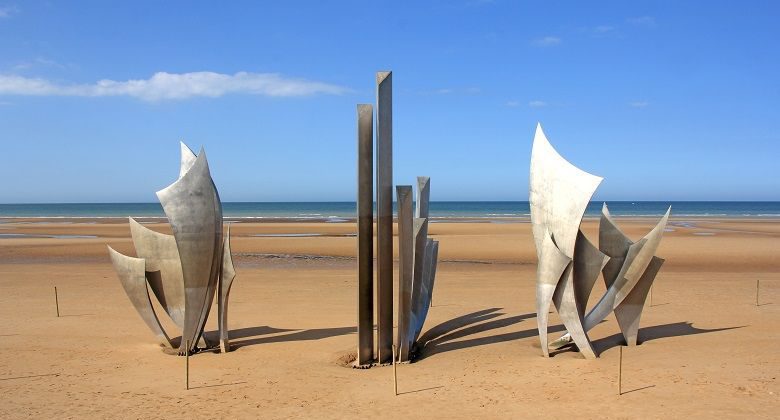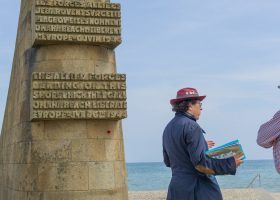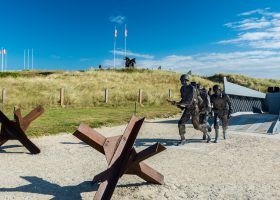Trying to learn more about D-Day? Not sure what happened on D-Day? We’re here to help! As historians and tour guides, sharing fascinating and accurate details about the most famous invasion of WWII is important to keep history alive. Keep reading to learn about the unbelievable Allied invasion of Normandy, France, and how it turned the tide of the war.
Pro Tip: Planning what to do on your trip to Paris? Bookmark this post in your browser so you can easily find it when you’re in the city. Check out our guide to Paris for more planning resources, our top Normandy tours for a memorable trip, and how to day trip to Normandy from Paris.
When Did D-Day Happen And What Was It?
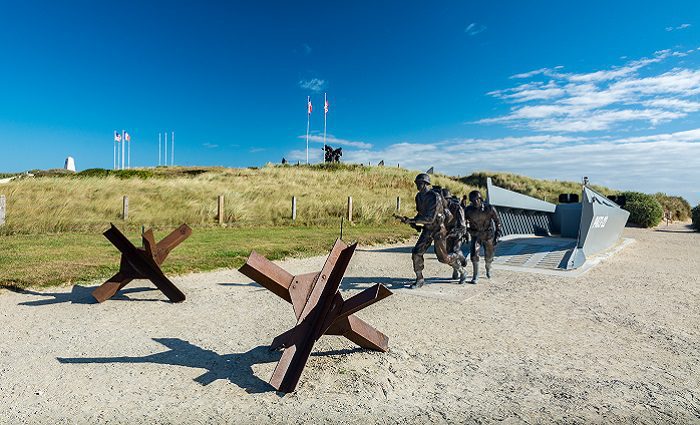
At this point in time, D-Day probably happened before you were born. It’s truly a piece of history now. D-Day took place on Tuesday, June 6, 1944 at 6:30 am. Over 156,000 Allied forces (primarily English, Americans, and Canadians) stormed the beaches of Nazi-occupied Normandy, France. Where did they come from? They’d crossed the English Channel from England on very rough seas.
Code named Operation Overlord, this massive military operation resulted in over 2 million Allied troops occupying France by August of 1944. Five beaches along a 50-mile stretch of the Normandy Coast served as Allied landing points. Those beaches were named by the Allied strategists: Omaha, Utah, Juno, Gold, and Sword.
For those who ask, “What and when was D-Day?” We’ve written the shortest summary possible below about what is actually one of the most complicated seaborne invasions modern in history. The Battle of Normandy extended beyond the beaches and seaside towns with the main goal of liberating Paris (about 170 miles inland). It was the result of months of intelligence gathering and planning.
Not ready to book a tour? Find out if a tour of the D-Day beaches in Normandy are worth it.
What to Know About the Nazi Occupation of France
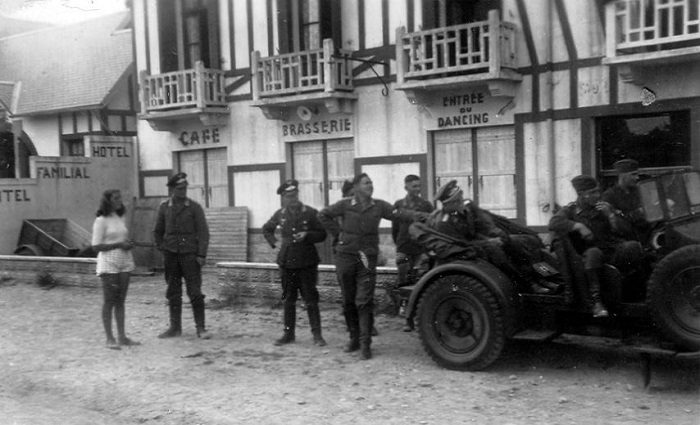
France falling into Nazi hands had surprised and devastated the Allied troops and rallied the Germans. Hitler had won his prize and marched through Paris triumphantly.
The campaign was known as the Battle of France. According to historian William Hitchcock, it began on May 9, 1940 and ended on June 22, 1940 when France, Belgium, the Netherlands, and Luxembourg fell under the crushing and speedy attacks of German firepower. And the resulting Nazi occupation of France lasted much longer than anyone had expected.
The Occupation of France and other European nations lasted until the summer of 1944 when, one by one, the Allies liberated them. The spark to these liberations happened on D-Day. Life in France during the Occupation was both far better and much worse than anyone might have imagined beforehand, explains historian Robert Gildea. Let’s see what he meant by that.
Life in France During the German Occupation
For the French, life radically altered under Nazi rule, but they tried to maintain a sense of normality when possible. Food and other necessities were severely rationed, as Gildea tells us. Not surprisingly, a black market flourished so people could get what they needed.
Yet at the same time, a strong resistance movement formed, which is just what you’d expect of the proud French people. Stories of heroism and even Nazi collaboration emerged after the war ended. Needless to say, surviving a military occupation that lasted for four years was no small feat.
In Normandy, people tried to go on with their lives. However, Gildea reminds us that the territory between the English Channel on the western side of the province remained highly strategic for both sides.
The Nazis seized homes, entire farms, estates, and even towns and cities. (Not to mention art throughout the country—remember “Monuments Men”?). The French shoreline became one long, defensive zone. From Caen in the north to the Carentan Peninsula, the Nazis ruled defiantly. Until D-Day, that is.
Normandy Invasion: Not the Most Popular Plan
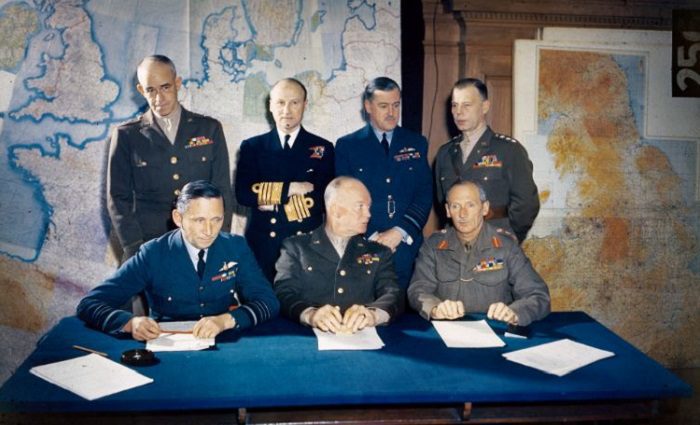
Believe it or not, a lot of Americans did not want to get involved in the war in the earlier years, notes historian William Hitchcock. The attack on Pearl Harbor on December 7, 1941 changed much of that, but many still hesitated to commit troops in Europe. (Why fight Europe’s war?)
As the plan came together, the British voiced opposition about invading France to stop Germany. After all, the Russians were making life miserable for the Germans from the other side, so why should the British step in too? Joseph Stalin, the leader of Russia, urged the opening of a second front.
Eventually, President Franklin D. Roosevelt found himself caught in the middle of a huge disagreement between Stalin and British Prime Minister Winston Churchill. According to Hitchcock, General Dwight D. Eisenhower famously stepped in—not publicly, of course—and unified the Allied leaders and military commanders. Ultimately, Eisenhower helped oversee the planning for a large-scale Allied invasion somewhere in Europe in 1943—over a year before it took place!
Meanwhile, back in the US, Roosevelt had the difficult task of convincing the American people they should go to war on another front. Keep in mind that the US was already fighting in the Pacific after the Japanese had attacked us as part of the Axis alliance with Germany and Italy. As we all know, Americans eventually joined in with the Allies, although active planning for the Normandy invasion had long begun by then.
Operation Bodyguard
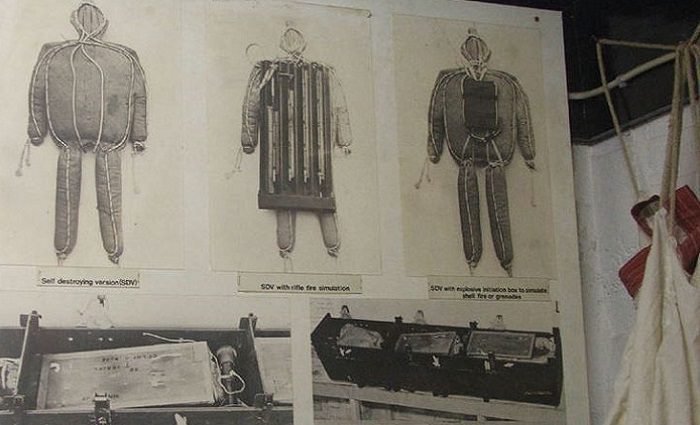
It’s hard to explain and comprehend just how much strategizing happened long before that fateful day on June 6, 1944. One piece of that complex puzzle became known as Operation Bodyguard.
The Allied forces carried out an elaborate deception operation designed to distract the Germans from Normandy. The Allies wanted the Nazis to believe they were invading France’s Pas-de-Calais region, which is north of Normandy. The Allies used clever diversion tactics such as false radio transmissions and double agents to make it look like they were going to attack somewhere else.
They also used fake ships, troops, barracks, tanks, and even air-dropped dummies with parachutes—ultimately to confuse the Germans. If you’ve ever seen the old TV show “Hogan’s Heroes” this stuff should sound familiar. Hogan’s team of war prisoners pulled off similar tricks to disrupt German plans while living in a POW camp.
Normandy Was No Stranger to War
The shores of Normandy have seen a lot of strife and bloodshed over the centuries. In fact, its war-torn history dates back to Vikings! The word “Normandy” comes from “Norman” or “Norseman.” The Norsemen were the Vikings who came down from Scandinavia, raided, looted, and pillaged, and then gradually settled the area, according to historian David Bates,
The most famous of the Normans was William the Conqueror, who led the Norman conquest of England in 1066. Obviously, William’s invasion went in the opposite direction of D-Day. He went to Hastings on the shores of southern England from Normandy. Eventually, Bates tells us that William won and thus became the ruler of England.
Not ready to book a tour? Find out how to visit the Normandy D-Day sites.
What Happened On D-Day?
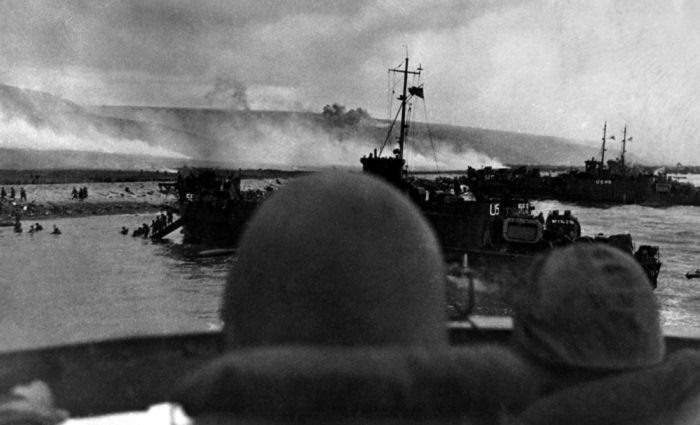
Fate, luck, surprise, preparation, grit, sacrifice, determination, and the love of freedom. All of these played a role in the success of this incredible invasion that turned a dismal war into an Allied success. It began with a large naval and aerial assault before over 156,000 troops descended on Normandy’s beaches by sea.
Under heavy artillery fire, troops from the US, Britain, and Canada swarmed Normandy’s shores by the thousands to reclaim France from the Germans. D-Day began the Allied liberation of France, and eventually the rest of Western Europe, from Nazi control. Here are a few key things that happened or played a role during D-Day.
Taken By Surprise
Did you know that D-Day took exiled French leader Charles de Gaulle by surprise? That was on purpose.
Historian Jennifer Sessions explains that, while planners of the Normandy Invasion kept De Gaulle informed with basic information, the official French government in Vichy and the French Resistance movement knew nothing. Allied command carefully protected the most important advantage: the element of surprise. Nobody wanted a leak to sabotage the effort or endanger thousands of lives.
Residents of the Normandy coast woke in terror to the sounds of a full-scale military assault. Sessions notes that the fighting extended gradually from the beaches and into the towns, inch by deadly inch. For nearly 10 weeks, fighting between the Allies and the Germans raged. Control of a single village would change hands several times before it was all over.
D-Day In the Skies Over Normandy
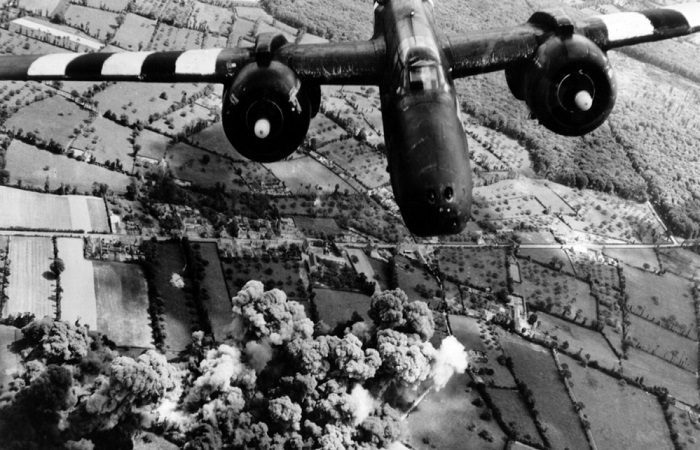
Before the Allied forces arrived by sea, they launched a huge aerial bombardment and airborne attack. And we really mean huge! Around 24,000 British, American, and Canadian troops literally dropped in just after midnight. Or did they?
Some of the paratroopers who landed in France that night weren’t actual living, breathing humans. Instead, they were dummies made from burlap and shaped to look like soldiers!
According to war historian Jon Latimer, the Americans had learned through testing that the 3-foot-tall phony paratroopers could fool anyone looking up. The dummies acquired the nickname “Ruperts” and the Allies named this ruse Operation Titanic.
Operation Neptune
If you’re planning a huge naval operation, why not flatter the Roman god of the sea? The planners of Operation Overlord did just that and named the naval effort Operation Neptune. According to WWII historian Jonathon Falconer, this effort involved thousands of soldiers from the men who disembarked on the beaches under heavy fire to demolition teams that attacked German defenses along the Normandy coast.
The Allied fleet included a variety of vessels such as the thousands of warships and landing crafts that appeared on the horizon early that morning on June 6, 1944. Different invasion forces were assigned to different beaches. For instance, Force O was sent to Omaha Beach, where some of the fiercest and deadliest fighting occurred.
Omaha Beach
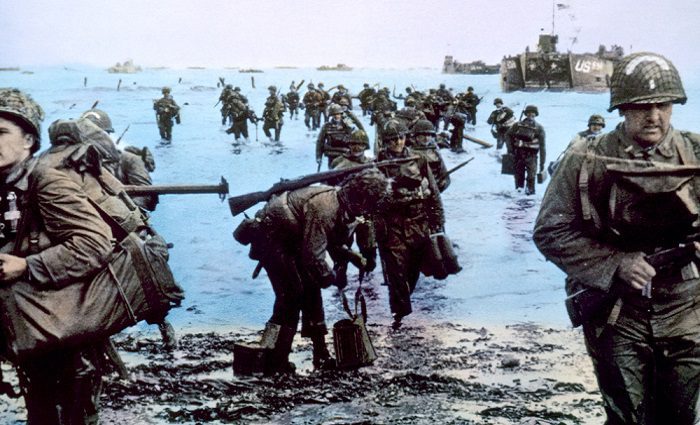
What was once unknown is now the most famous beach of the war. Omaha Beach is a 5-mile stretch of sandy beach on the Normandy coast that was heavily defended. It was one of two beaches invaded by American troops. The other was Utah Beach.
This is where young American troops—many still teenagers—disembarked from a landing craft and braved German artillery fire coming from pillboxes in cliffs above them. US forces faced the most German resistance at Omaha Beach. The reported number of American casualties sustained at Omaha Beach ranges from 2,000-5,000, as estimated by the US Navy.
Arromanches-les-Bains
How did the Allied forces move their vehicles and cargo across the English Channel and onto the shores of France? Good question! Engineers designed portable, temporary harbors where ships could offload their cargo, including heavy vehicles and artillery.
They named the first harbor at Omaha Beach Mulberry A. The second they called Mulberry B, which they installed at Arromanches-les-Bains on Gold Beach. If you’ve seen the movie “Dunkirk” the harbors are much like what they used during that evacuation.
Today, you can see remnants of Mulberry B in Arromanches—the very same harbor the Allies used for over 10 months after D-Day. Incredibly, 2.5 million troops and 4 million tons of supplies were moved through Mulberry B, writes Jonathan Falconer.
La Pointe du Hoc
We can’t forget Pointe du Hoc’s role on D-Day. The famed cliffs of Pointe du Hoc arise from Normandy’s northwest coast to overlook the English Channel. Pointe du Hoc was the highest point on the Normandy coast that stood between Utah Beach and Omaha Beach.
A large concentration of German artillery sat at the top of Pointe du Hoc, which made it almost impenetrable. Those with the high ground usually win. Allied troops braved heavy artillery fire and ultimately captured Pointe du Hoc after scaling its cliffs on D-Day, though they suffered heavy losses.
Not ready to book a tour? Find out how to visit the Normandy D-Day sites.
In the Aftermath of D-Day
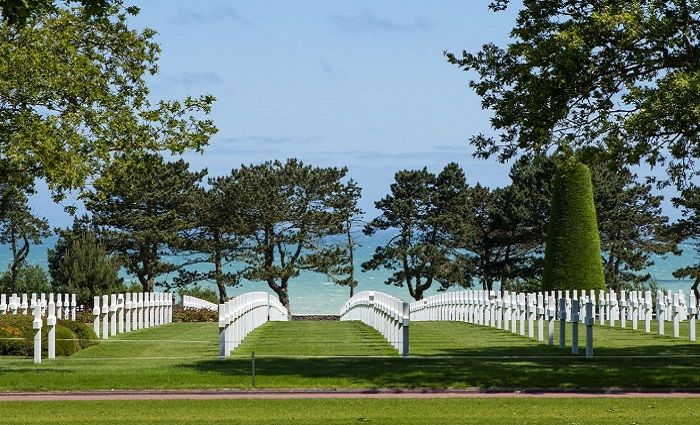
The success of D-Day can’t be ignored, yet it came at a high cost. It marked an international fight to drive the Nazis back to Germany and follow them there, ultimately conquering them in their home country. Allies didn’t liberate Paris until August 25, 1944 as the Germans had a strong foothold in France.
The US National D-Day Memorial Foundation has provided a fairly accurate estimate of casualties from D-Day through the entire Battle of Normandy. The statistics are heartbreaking.
They’ve identified 4,413 Allied soldiers and other personnel were killed on June 6, 1944 alone. Some estimates range as high as 12,000. More than 100,000 Allied and German soldiers and personnel died between D-Day and the end of the Battle of Normandy in August.
Another number you don’t often hear is extremely tragic. Over that summer of fighting, as many as 20,000 French civilians lost their lives. The sacrifices made by individuals to end WWII are almost impossible to grasp, and we honor their memories when we visit these hallowed places.
The Normandy American Cemetery And Memorial
The Americans began construction of the Normandy American Cemetery shortly after D-Day. It goes without saying that there was a tragic need for the cemetery. However, the memorial side of it came much later after the war had ended and it was time to heal.
According to the American Battle Monuments Commission, this was the first American cemetery built on European soil. The cemetery spans 172 acres and stands on a bluff overlooking Omaha Beach. The remains of 9,387 American military personnel are buried at the Normandy American Cemetery. Many who were laid to rest in the cemetery lost their lives during the Normandy invasion.
How to Visit the Beaches of Normandy
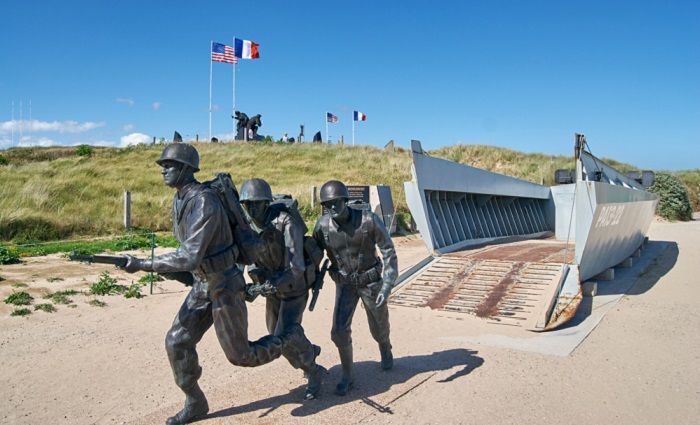
Anyone coming to France should make the time to stop in Normandy. Most people typically visit when they’re in Paris and opt for a day trip.
Touring Normandy’s beaches is a must-do, especially for history buffs but for anyone curious about the past from which we can learn so much. Seeing with your own eyes the beaches, villages, cities, and farmland that were the setting for this historic, unprecedented military assault is life-changing.
The drive to the coast from Paris takes less than 3 hours. If you start at Caen, which is slightly inland and a bit north of the landing beaches, you can drive southward along the coast to different stops we’ve mentioned above. This is definitely manageable but you’ll have to deal with traffic and a large highway in France. There is almost no public transportation when you leave a French city, so you have to have travel arrangements made before you arrive.
Save your energy for exploring the sites by letting a guide lead you to each important site. We offer a full day trip to Normandy from Paris that features visits to Omaha Beach, the Normandy American Cemetery and more. Above all, you’ll experience the storied history of the Battle of Normandy as the details of sacrifice and bravery are shared.
Not ready to book a tour? Find out if a tour of the D-Day beaches in Normandy are worth it.

Where To Stay in Paris
With a city as magnificent as Paris, it can be hard to find the perfect hotel at the perfect price. Explore the best hotels and places to stay in these incredible neighborhoods in Paris.
